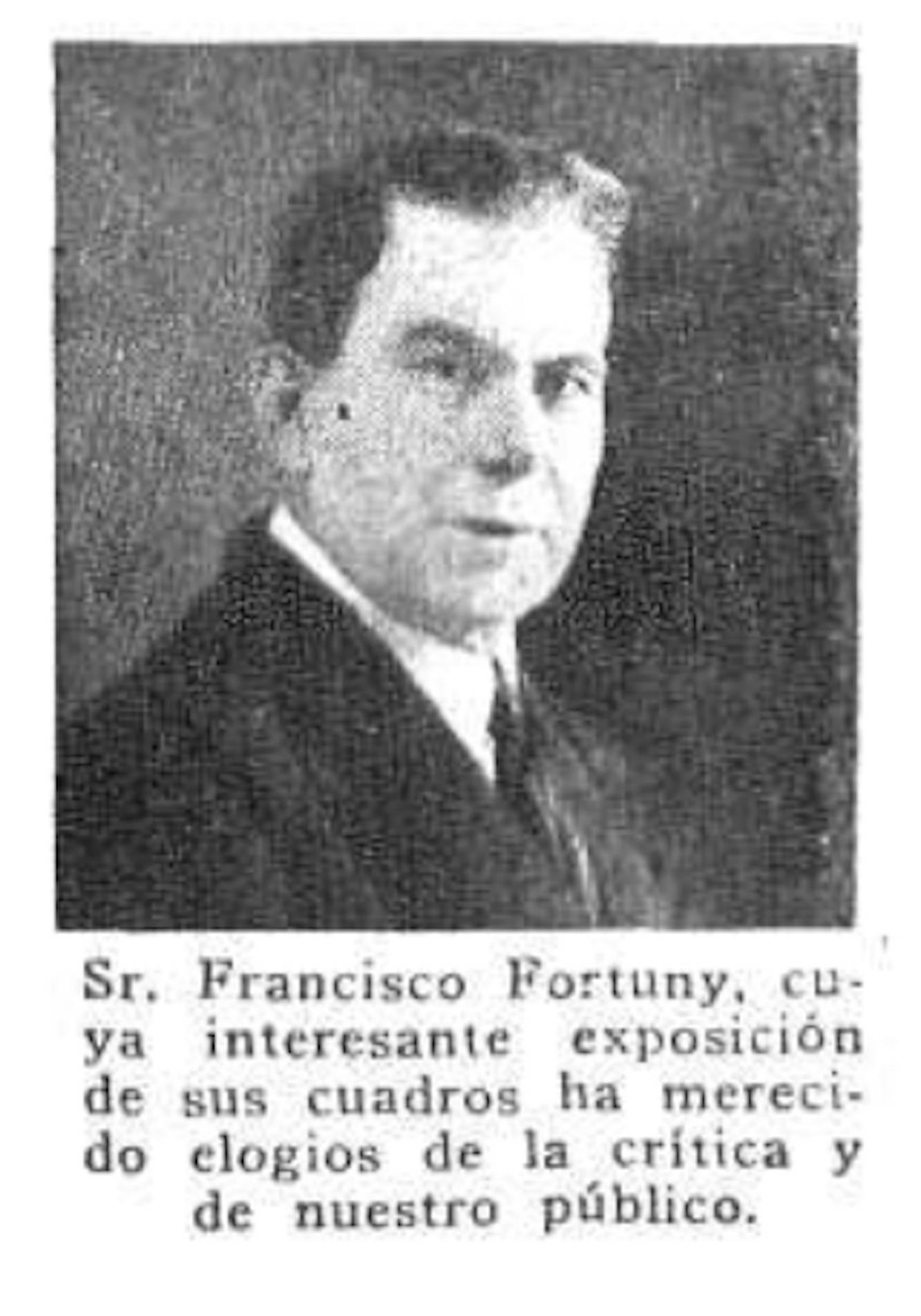Archive
Francisco Fortuny Masagué
- Francisco
- Fortuny Masagué
- 02-01-1864
- Tarragona (ES)
- 23-07-1943
- Buenos Aires (AR)
- PainterIllustratorGraphic Artist
Spanish-born Francisco Fortuny migrated to Buenos Aires in 1887. His most renowned work was done as illustrator in printed magazines such as Caras y Caretas.
Word Count: 24

Portrait of Francisco Fortuny, Caras y Caretas, no. 1 239, 1 July 1922. 
Francisco Fortuny and Ramón de Castro Rivera, "Una escena de la Revolución de Mayo." Caras y Caretas, no. 34, 25 May 1899. 
Francisco Fortuny, "La locomoción del siglo XX." Caras y Caretas, no. 34, 25 May 1899. Gras Valero, Irene. “Entre la modernidad y la preservación de la memoria: Las Ilustraciones del artista catalán Francisco Fortuny (1864–1942) en las revistas de Buenos Aires.” Panamí, no. 9, 2019, pp. 57–68, doi: https://doi.org/10.22370/panambi.2019.9.1798. Accessed 26 March 2021.
Gras Valero, Irene and Cristina Rodríguez-Samaniego. “La Prolífica trayectoria del pintor e ilustrador catalán Francisco Fortuny (1864–1942) en Buenos Aires.” Investigación – Creación artística, special issue of Index, Revista De Arte contemporáneo, no. 9, 2020, pp. 28–40, doi: https://doi.org/10.26807/cav.v0i09.277. Accessed 26 March 2021.
Szir, Sandra. “Figuraciones urbanas. Caras y Caretas, 1900.” Dinámica de una ciudad: Buenos Aires 1810–2010, coordinated by Alfredo E. Lattes, Dirección General de Estadística y Censos, 2010, pp. 453–479. Academia, www.academia.edu/40101341/_Figuraciones_urbanas_Caras_y_Caretas_1900_. Accessed 21 April 2021.
Word Count: 124
Barcelona, Spain (1872); Buenos Aires, Argentina (1887)
Caras y Caretas, Calle Bolivar 578 to 586, Buenos Aires (editorial office).
- Buenos Aires
- Milena Gallipoli. "Francisco Fortuny Masagué." METROMOD Archive, 2021, https://archive.metromod.net/viewer.p/69/2950/object/5138-11258760, last modified: 12-05-2021.
-
Caras y CaretasMagazineBuenos Aires
Caras y Caretas was one of the widest read magazines in Buenos Aires. A collective venture, run largely by exiles, it renewed the public press through an attractive layout.
Word Count: 29
José Maria CaoCartoonistIllustratorGraphic ArtistBuenos Aires“Master of the pencil and the pen”, Galician artist José María Cao became one of the most relevant illustrators of Buenos Aires press by the beginning of the twentieth century.
Word Count: 31